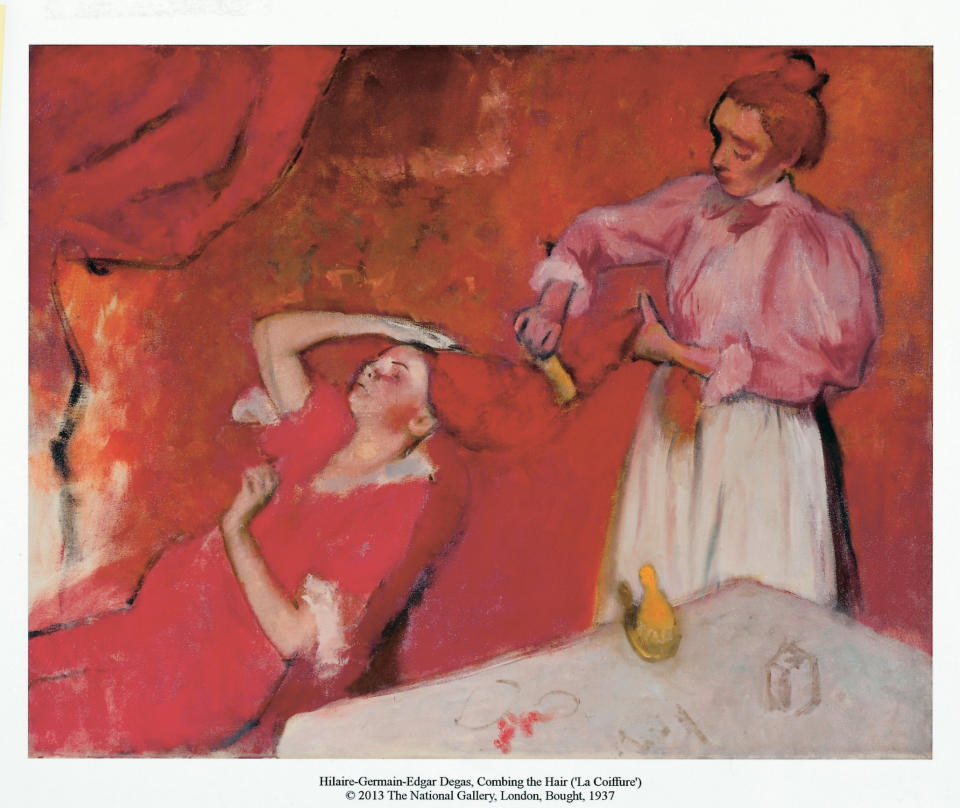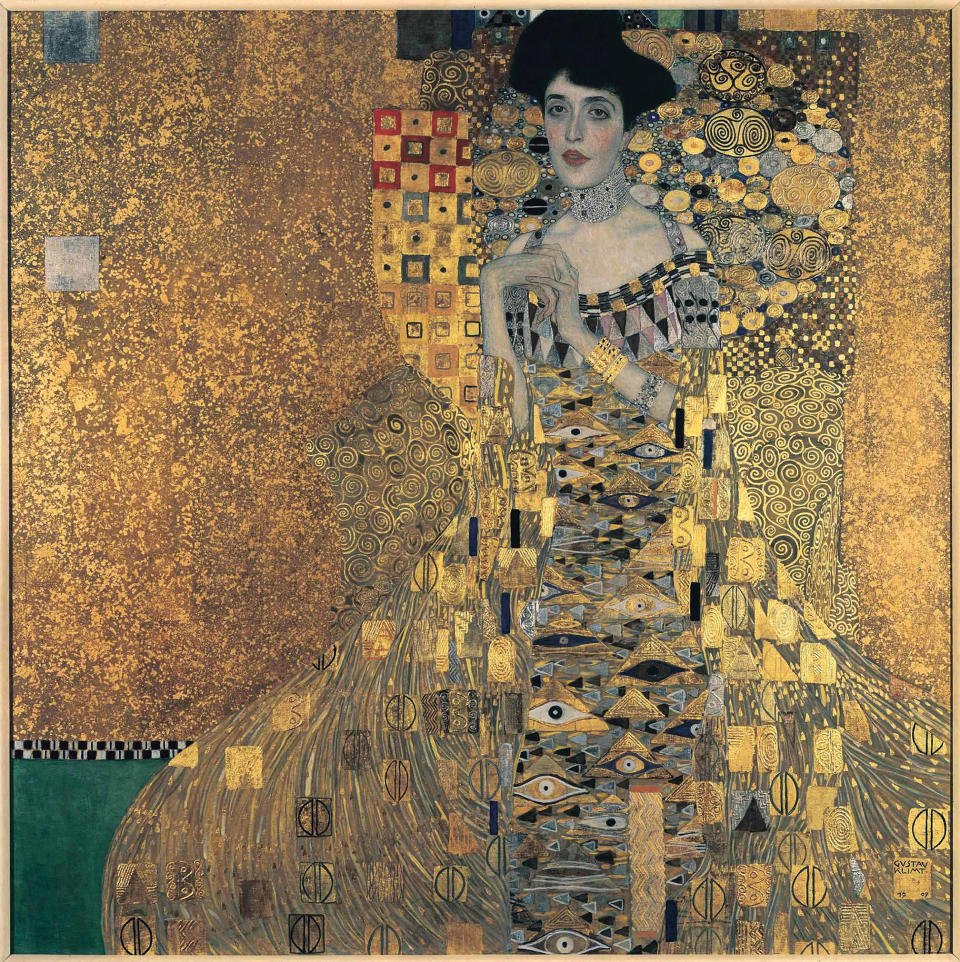Spider-Man Sequel, ‘Dopamine Dressing’ and Vincent Van Gogh Cast Colors in New Lights

Apparently, prized Impressionist paintings and the burgeoning “dopamine dressing” trend in Asia aren’t so far apart.
Counter to many people’s inclination to see colors strictly on a surface level, author Kelly Grovier digs into the forensics of hues with “The Art of Colour.” Reached in his Belfast, Northern Ireland, home, the Oxford-educated writer and poet drew from his literature background, namely etymology.
More from WWD
Just as the meaning of a word can change a reader’s interpretation of a work, “artymology” can have a similar effect. Although it is widely discussed how knowing the back story of a key word enriches a reader’s interpretation of literature and alights possibilities that wouldn’t have appeared with a surface reading, that isn’t the case with art. “We never really do that in art history. Think about the material constituents that paintings are comprised of — especially now when we access art on computer screens. We think of color as a wave that hits our eyes. It’s a luminous pixelated pulse,” he said.
Most don’t consider how paintings are comprised of “fantastically, far-flung elements that have come from extraordinary places and have had remarkable adventures before they reach the work we are looking at. It’s incredible how if you dig into the origins of color, it can in fact change the way you read a painting,” Grovier said. That ideology also applies to fashion, from his perspective.
The freelancer and columnist’s portfolio includes writing a series on color for the BBC about five years ago, and more poems about how the Italian Renaissance forefather Giotto’s use of color “sank into his bones and was the forensic element that helped identify his skeleton after it was discovered.”
“Artymology” involves studying pigments “as a means to get at possibilities in art that you might not otherwise get to,” Grovier explained. Translation? Vincent Van Gogh’s “Starry Night,” for example, uses emerald green, “which is toxic; Indian yellow, which is derived from the urine of cows fed nothing but mango leaves, and Prussian blue, which has a fantastic, alchemical back story to it,” he noted.
Katsushika Hokusai’s “’The Great Wave’ is forever crashing in people’s imagination” is among his favorites, though that would change depending on the hour of the day. Readers will also find examples of Caravaggio’s paintings and ”stunning works with precious silver” by contemporary artists Louise Bourgeois and Cornelia Parker. The color prowess of Liliane Tomasko, Sean Scully, Pierre Renoir, John Singer Sargent, Gustav Klimt and others is showcased too in the just-out Yale University Press-published book.
Recognizing how fashion has always been inspired by art, Grovier described flipping through the book as “a wonderful compendium of some great works of fashion.” Case in point, Frederic Leighton’s “Flaming June” in a flaming orange, diaphanous gown, James McNeil Whistler’s “Symphony in White” and Sargent’s “Madame X.” Designers and other creatives can gain a sense of the shifting fashion of color, where that comes from and how it inflects the stories that have gone on to inspire fashion, Grovier said.
However scholarly that might sound, movie fans of “The Devil Wears Prada” can relate, thanks to how Meryl Streep breaks down what is essentially Yves Klein blue. More recently, “dopamine dressing,” as in sporting rainbow-colored clothes, has been gaining ground in China, where influencer Baizhou Xiaoxiong’s vibrant-infused videos had reportedly registered 470 million views as of Monday. This all adds up for Grovier, who said, “There certainly isn’t an age in modern times when you can’t measure up the obsessions with fashion and try to find their links in fine art. The artists I talk about were absolutely addicted to color. They would have responded in similar motivations to this use of color.”

Oil on canvas, 114.3 × 146.7 (45 × 57 7/8).
Directors of “Spider-Man: Across the Spider-Verse” reportedly used Leonardo da Vinci as a source of inspiration. Informed about how they also periodically flared the screen red to relay Gwen’s anger throughout the film, Grovier said the rise of abstract Expressionists and Expressionists’ use of color in the beginning of the 20th century led to “emotion taking the center stage.” But once the camera arrived the “attempt to capture emotion through color became a real phenomenon and probably the foremost consideration among artists,” Grovier said, adding his aim was to amplify that conversation so that “we would feel more when we see color.”

Oil, silver and gold on canvas, 140 × 140 (55 1/8 × 55 1/8).
The public’s increasing appreciation of the kaleidoscope of color can be seen in the popularity of such art experiences as “Van Gogh: The Immersive Experience,” “Gustav Klimt: Gold in Motion” and Yayoi Kusama’s “Infinity Mirror Rooms,” where visitors bask in streams of vibrant lights. (The $43 billion art tourism market is expected to keep going strong for the next decade, according to a recent Future Markets Insight report.) In addition, all that at-home time during the pandemic shutdown illuminated people’s perspective about color. They are now more inclined to not take what previously might have been considered superficial elements for granted, such as the mood-lifting potential of painting a room in a different hue, Grovier said. “Everyone has just become a bit more profound about the things that are near at hand. It gave a lot of people time to reflect. One of the things that reflects the most is color,” he said.
At work on a book about the similarities between how Mozart at 14 immediately jotted down Allegri’s “Miserere” after hearing it once and Michelangelo’s ceiling frescoes in the Sistine Chapel. Basically, Mozart created the first illegal download, since copying it was prohibited due to that choral composition was meant to be heard only in the Sistine Chapel. The book will explore the connection between the structure of the music and the structure of the frescoes, and “how they work together to create a single, vibrant, immersive work that was in a certain sense disfigured when Mozart severed the audio from the visual by taking it out of the Sistine Chapel.”
That multisensory experience is in line with what people want now, according to the author. “We are so cut off, when we just walk around with our phones. Put that away for a minute and lose yourself in a profound moment that is right there in real life with notes actually being heard, not through your earbuds. People want to dissolve in a real moment and not be severed from the now quite so much.”
Best of WWD

 Yahoo Sports
Yahoo Sports 